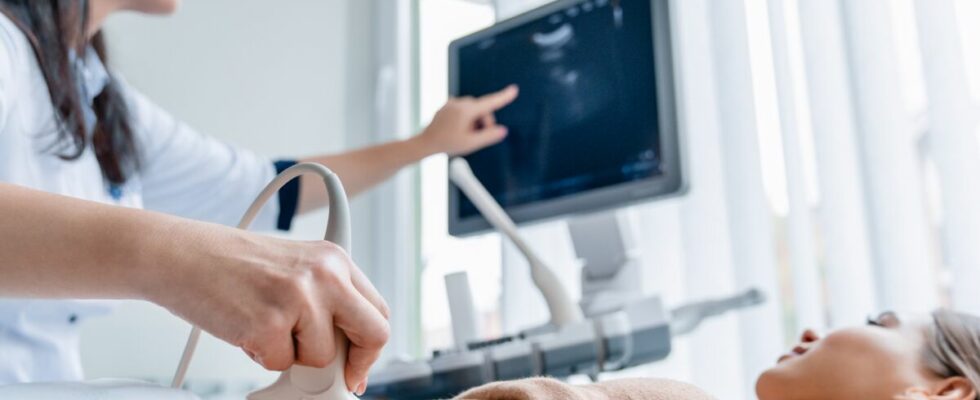The dating ultrasound is an optional imaging test, which can be performed by a radiologist, an obstetrician-gynecologist, or a midwife with an ultrasound diploma. This routine examination marks the start of pregnancy monitoring for the pregnant woman, and must be carried out before 10 weeks of amenorrhea (SA), according to the High Authority for Health. To perform this ultrasound, the practitioner uses a transducer, which he slides over his patient’s stomach.
1. Goals of dating ultrasound
In France, pregnancy monitoring includes three mandatory ultrasounds, one per trimester. But in certain cases, and in particular in the event of an unknown conception date, the High Authority for Health also recommends carrying out a dating ultrasound, or early pregnancy ultrasound. The role of this examination is above all to date the start of the pregnancy, with a precision of plus or minus 3 days, according to the Association of Radiology and Medical Imaging Centers. Dating ultrasound can also be useful to determine the number of embryos, to identify twin or multiple pregnancies, and to screen for certain anomalies.
2. When to do a dating ultrasound?
According to the High Authority for Health, the first trimester ultrasound must be carried out between 11 weeks and 13 weeks + 6 days. The dating ultrasound should not be confused with this mandatory examination. It does not meet the same objectives, and must be carried out between 6 and 10 weeks of amenorrhea. During this first consultation, the doctor offers the pregnant woman a pregnancy monitoring schedule, with a precise schedule of the next ultrasounds.
3. Procedure of a dating ultrasound
During the consultation, the pregnant woman removes the clothes that cover her stomach. The practitioner (radiologist, gynecologist or specialized midwife) applies conductive gel to this area and uses a specific device: the transducer. The latter emits sound waves, ultrasound, which pass through the tissues and are reflected. The echoes are then captured and converted into images which are projected on a screen. Painless, the dating ultrasound lasts approximately 30 minutes. During the examination, the practitioner:
- counts the number of embryos and verifies that the pregnancy is not ectopic;
- measures the cranio-caudal length to determine the start date of pregnancy;
- controls amniotic fluid and placenta;
- informs the woman about the overall progress of her pregnancy and her follow-up schedule.
Sources
Read also :
⋙ Ultrasound: definition, procedure and principle
⋙ Ultrasound: everything you need to know about this exam
⋙ Midwife or gynecologist: how to choose and in which case?
